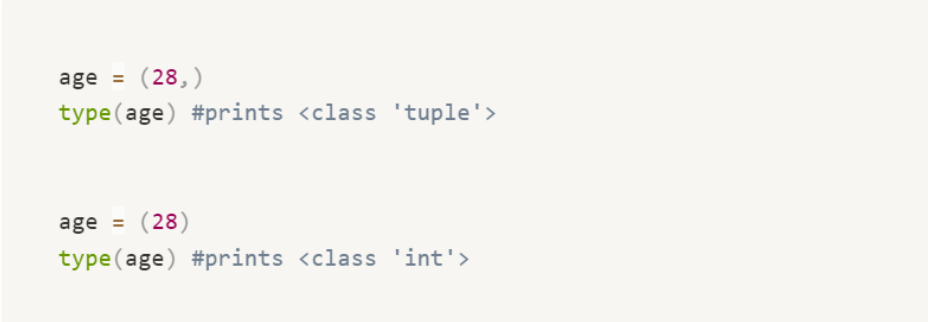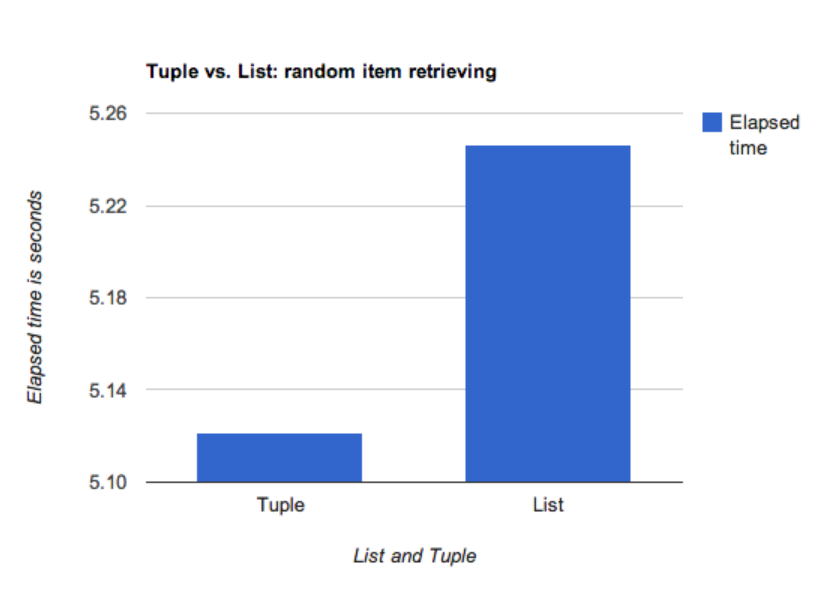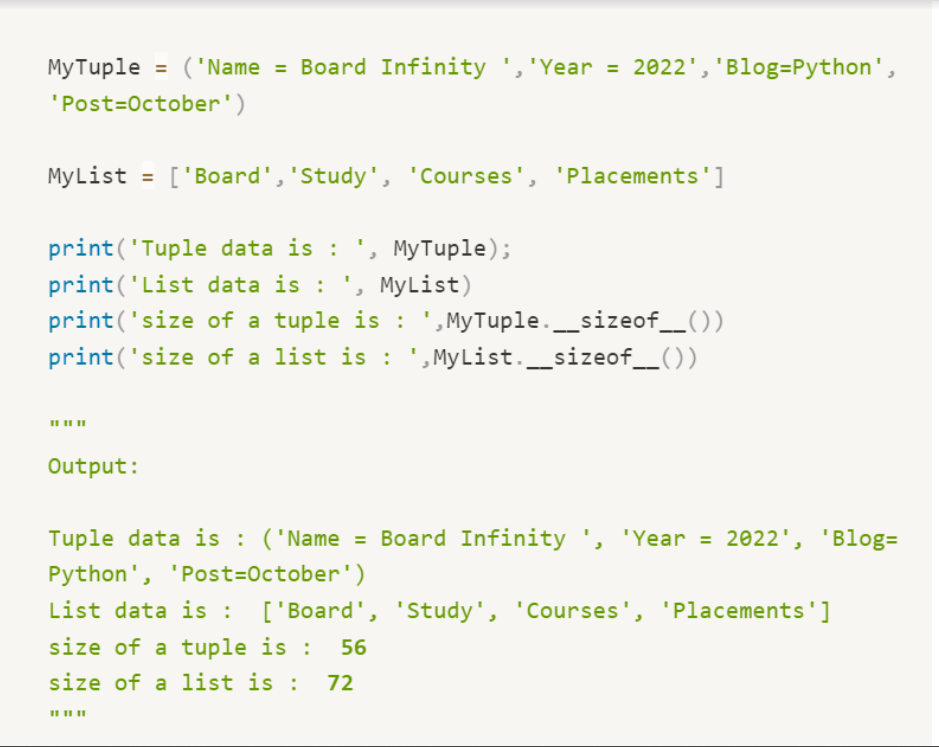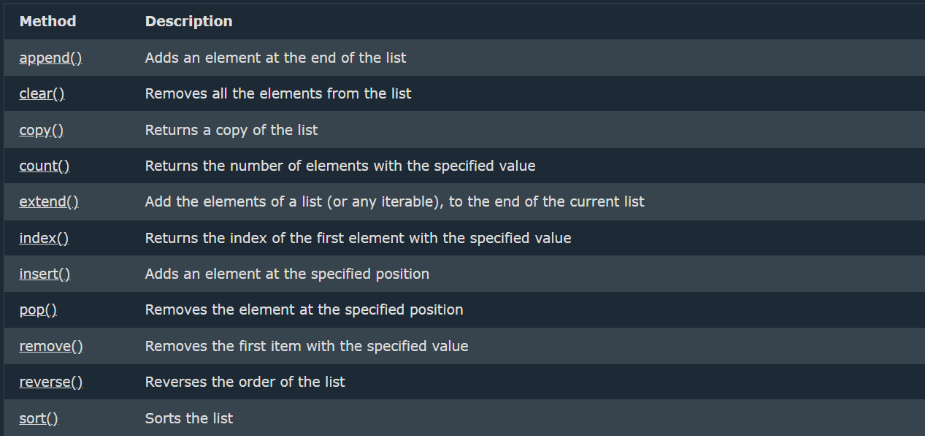List vs Tuple: Difference Between List and Tuple
 Prachi Katiyar
Prachi KatiyarTable of contents
# Introduction
This article will offer you a clear understanding of how Python lists and tuples function, as well as a thorough comparison of their characteristics and uses. Although they may appear similar at first, they are both helpful. They do, however, differ significantly, and each one is best suited for a certain situation. Along with code excerpts for simplicity, we'll go through each one's distinct traits and special use cases.
You can learn more about Python Data Types to get started with Python.
# Defining Lists vs Defining Tuples
Tuples are created using round brackets ➡️ (x, y, z), whereas Lists are defined by placing the elements inside square brackets ➡️ [a, b, c].
It is required to include a comma at the end of a tuple that has only one item. Python will not recognize the item as a tuple if the trailing comma is not included.

There is no need to bother about including the trailing comma when making a list with only one item.

# Mutability
Tuples are immutable whereas lists are mutable in Python, meaning that list elements can be modified after declaration while immutability of tuples ensures that they cannot change after they have been constructed. Tuples can't be constantly modified. An error will appear if you attempt to modify the values of any particular items:

It will give you a TypeError saying that item assignment is not supported by the 'tuple' object.
Since tuples can't be altered, you can't add, swap out, reassign, or delete any of the elements. Additionally, it implies that tuples have a set length which remains the same throughout the course of the program.
# Operation Speed ⏩
The speed of these two data types is the other distinction.
- In Python, tuples are quicker than lists when compared to lists. We cannot comprehend these speeds in short programs, but they can be critical in lengthy procedures. Therefore, you may use Python tuples if you require additional performance.
- Python lists can be used if performance is not a concern for your work.

# Memory Consumption 💽
- Memory utilization might be critical at times, much like speed. This use becomes more crucial if your code is huge. Therefore, these two data kinds use different amounts of RAM.
- Compared to lists, tuples require less memory. If you are processing lots of data, lists are better, if you storing and read data frequently without manipulation then using tuples is recommended due to lower memory usage compared to Python lists.

Despite the reality that the tuple contains more characters, the list is occupies more memory as seen from the program above.
# Usability With Dictionaries
Tuple objects can be used in Python as keys for dictionaries. However, we have no way to use list objects as dictionary keys. This is because keys must be hashable and immutable which satisfies the properties exhibited by tuples.
Brush up your Python skills by reading our curated Python Interview Q&A
# Methods
Python's lists and tuples feature several similar and unique functions. Compared to tuples, lists offer many more built-in methods since they are mutable data types that allow different operations to be performed on the contained members.
## List Methods

## Tuple Methods

# When to use Tuples
- The usage of tuples is highly recommended if you want the information in your collection to be read-only, never change, and always stay the same and consistent.
- Tuples are generally used with sets and dictionaries as well, which demand that the components contained inside them be of an immutable type, as a result of this capability and the assurance that data is never modified.
# When to use Lists
- However, since lists are changeable, you may easily alter and edit them. This indicates that lists are flexible, allowing for the simple addition of things, removal of items, movement of items within a list, and switching of items inside a list.
- If the program wants data to be flexible and easily manipulated, not always be the same, and be changed as necessary, lists come in handy.
- There are several built-in Python methods for lists that may be used to execute actions on the list that are not possible with tuples.
- This implies that over the course of a program, lists' length and size can change.
Interested in Data Science? Read our article about Data Visualization in Python
# Conclusion
It shouldn't be too difficult to choose between Python tuples and Lists given that we are aware of their differences. A list is flexible, whereas a tuple is not, and this is the main distinction. Therefore, we use a list when we wish to group related things together but a tuple when we know exactly what data is contained in it.
For more, check out Why Python is used in Machine learning?
✅ Grab our 1:1 Python Zero to Hero course today and become a professional Python practitioner. We offer you Live Classes, Counseling, Personalized Training and provide top coaches to help you get an amazing learning experience. We have had 10,000+ happy students, join the community and flex your Python skills!
Subscribe to my newsletter
Read articles from Prachi Katiyar directly inside your inbox. Subscribe to the newsletter, and don't miss out.
Written by
